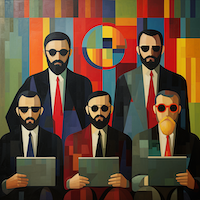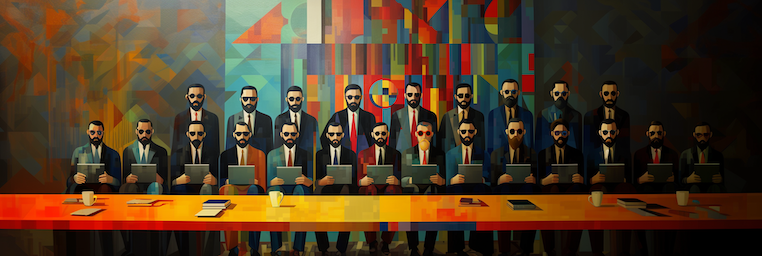
Application modernization is the transformative process that updates legacy software applications to leverage modern infrastructure, platforms, and technologies.
This evolution is essential for businesses aiming to stay competitive in today’s fast-paced digital landscape.
By modernizing applications, companies can improve efficiency, reduce costs, and enhance user experience, ensuring their operations are agile and scalable.
From Monolithic Systems to Microservices
Traditionally, applications were developed as monolithic structures, where all processes were tightly integrated into a single, indistinguishable unit.
While simple to develop, these monolithic applications became cumbersome to update and scale over time.
One of the key strategies in application modernization is the transition from monolithic architectures to microservices.
Legacy Software Systems Modernization
This approach, highlighted by IBM, involves breaking down a large, complex application into smaller, independently deployable services.
Each microservice runs its own process and communicates with lightweight mechanisms, often an HTTP resource API.
This strategy significantly improves scalability and flexibility, allowing businesses to update and improve components without disrupting the entire system.
Cloud Migration
Another critical strategy is cloud migration, which involves moving applications, data, and other business elements to a cloud computing environment.
There are different types of cloud migrations an enterprise can perform.
One common model is the transfer of data and applications from a local, on-premises data center to the public cloud.
However, a cloud migration could also entail moving data and applications from one cloud platform or provider to another — a model known as cloud-to-cloud migration.
The latter often involves re-platforming or rehosting applications to better leverage cloud models, often incorporating containers and Kubernetes for enhanced scalability and management.
By moving applications to the cloud, businesses can take advantage of the cloud’s scalability, cost-efficiency, and enhanced performance.
Technologies such as containers and Kubernetes have further streamlined this transition, enabling organizations to deploy and manage applications more effectively in the cloud environment.
This strategy is often part of a broader application migration and modernization effort, which may include mainframe modernization for legacy systems that were previously hosted on-premise.
API: Bridging the Old and the New
APIs (Application Programming Interfaces) are vital in modernizing legacy systems, allowing old and new systems to communicate and share functionalities seamlessly.
This approach enables businesses to extend the life of their legacy systems while incorporating modern technologies, thus achieving a balance between preserving valuable legacy functionalities and embracing innovation.
Application rationalization and modernization often involve identifying which parts of a legacy system can be exposed as APIs to facilitate this integration.
The Modernization Roadmap
Developing a structured application modernization roadmap is essential for successful modernization projects.
This roadmap outlines the steps from assessment to implementation, ensuring that the modernization efforts align with the organization’s business goals and objectives.
A well-planned roadmap helps in navigating the complexities of modernization, ensuring a smooth transition to modern architectures.
It includes legacy application modernisation strategies and middleware modernization plans to address all aspects of the existing systems.
Modernization Challenges
Application modernization comes with its set of challenges, including technical debt, integration complexities, and organizational resistance.
However, with a strategic approach that includes thorough planning, skilled resources, and the right technologies, these challenges can be overcome.
Emphasizing continuous learning, agile methodologies, and stakeholder engagement are key strategies for a successful modernization journey.
Application Modernization Use Case: Banking Sector
In the banking sector, legacy systems have been a significant hurdle in adopting new technologies and meeting modern customer expectations.
A notable use case involves a major bank that embarked on a legacy modernization journey by adopting a microservices architecture.
This transition allowed the bank to offer new digital services, such as mobile banking and real-time payments, significantly enhancing customer satisfaction and operational efficiency.
The bank utilized cloud migration strategies to ensure these services were scalable and reliable, demonstrating the tangible benefits of application modernization in a highly regulated industry.
Application Modernization Use Case: Retail Industry
The retail industry has also seen substantial benefits from application modernization.
For instance, a global retailer faced challenges with its legacy inventory management system, which could not handle the scale and complexity of its growing online marketplace.
By moving to a microservices-based architecture and leveraging cloud technologies, the retailer was able to create a more agile and scalable inventory system.
This modernization effort not only improved stock management across global warehouses but also enhanced the customer shopping experience through more accurate stock levels and faster shipping times.

Application modernization is a critical step for businesses across all sectors aiming to stay relevant and competitive in the digital age.
In the last years, SUPREMATIC participated in numerous legacy systems modernization projects, where the applications typically were written in .NET, Enterprise Java (EJB, Swing, Eclipse RCP), or JavaScript (Node.js, GWT, jQuery, Angular).
As technology continues to evolve, the importance of application modernization will only grow, making it essential for businesses to embark on this journey sooner rather than later.
Our offer
Free Project Architecture Audit
This session lasts 2 hours and is held in small groups.
Agile Fixed Price Contract
Suitable for new development and legacy modernization projects.
We are committing to deliver the agreed-upon functionality within a budget and offer a warranty on the outcomes.
Hourly rate / „Time and Materials“
Suitable for consulting, technical supervision and smaller development projects.

Microsoft Teams: Enterprise Apps Modernization
Integrating an enterprise app with Microsoft Teams brings together various work tools, making tasks simpler and teamwork more effective. This approach fits well with today’s flexible work trends, including remote and hybrid work setups.

Node.JS: Web Applications Modernization
In the context of web development, Node.js and server-side JavaScript have clearly shown their strength in helping to build server-side and networking applications.

OSGi and Eclipse RCP
OSGi (Open Service Gateway initiative) is a set of specifications that define a dynamic component system for Java. These specifications enable a modular approach to system architecture and offer several advantages and some challenges.
Eclipse RCP (Rich Client Platform) is a platform for building and deploying rich client applications. It leverages the core of the Eclipse IDE, allowing developers to create standalone applications with extensive features.